By Peter Suciu
The swords of the samurai have long been desirable to collectors. Now, even their parts have become prized. The blade, scabbard, and mountings each were likely made by individual artists and are things of rare beauty. This is true as well of the tsuba, or hand guards.
Unlike the often plain or otherwise undistinguished hand guards of European-styled blades, tsuba (the word is plural as well as singular) evolved to the point of showing highly detailed, unique patterns, frequently religious in nature. Today a vibrant collectors’ market exists for the small, round, or oval metal sword fittings, and like the samurai warriors and their swords, tsuba generally fall into several time periods with varied designs and availability.
While the term “samurai” often refers to any Japanese warrior, the word was originally used to denote a select class of fighting men. These true samurai emerged during the 10th century, and the earliest of tsuba were probably the work of the swordsmiths, who made tsuba to go with their own swords. These early examples are often less detailed and lack the creative qualities we associate with the higher quality examples. More importantly, some of the early tsuba and blades that may even pre-date the samurai class were not native to the Land of the Rising Sun.
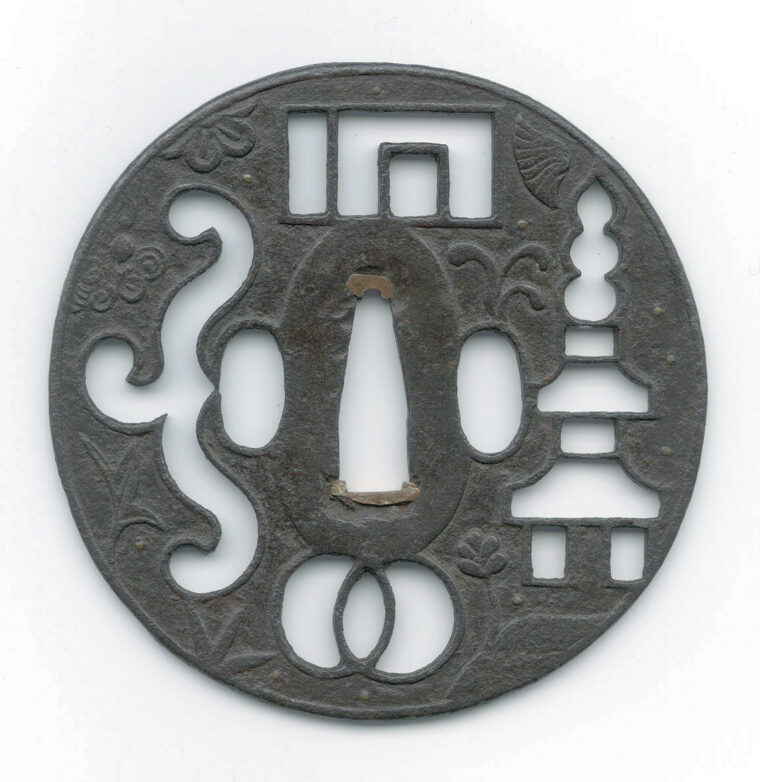
“The earliest swords excavated from burials in Japan appear to have been imported from China or Korea,” explains Jim Gilbert, president of the Metropolitan New York Japanese Sword Club and member of the board of directors of the Nihon Token Hozon Kai in Tokyo, the oldest sword-study organization in Japan. “The first distinctively Japanese tsuba were found in tombs of the 6th to 7th century. These early iron and gilt bronze guards are called Hoju tsuba.”
It is important to note that these early surviving blades and fittings often did not receive the same study as their later counterparts, and were seen to have had little or no relevance to the study of the Japanese sword. This has changed in recent years and Hoju tsuba are being recognized for their importance. The Hoju tsuba, generally believed to be the first distinctly Japanese-styled guards, are often teardrop-shaped. More importantly, these tsuba were mounted on swords with straight blades, rather than the later curved blades that have become universally recognized as being “samurai swords.”
The first early “homemade” metal fittings lacked essential details but even these have become highly sought by collectors, especially because they are not particularly common. Tsuba created before the 16th century during the Muromachi period (1392-1573) were often very thick forged iron products that were sold along with the blades. They were unsigned by the maker, and thus it is difficult at best today to determine which swordsmith was responsible for individual tsuba from this period. But this doesn’t mean they were plain or showed a lack of skills; while they may have added only a bit of sparse decoration these guards certainly influenced the later specialists.
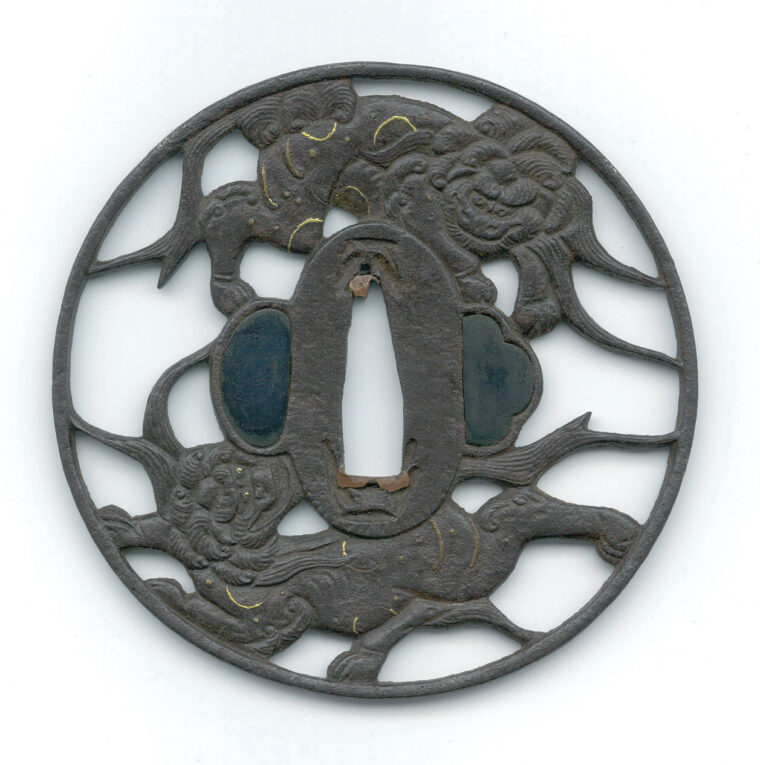
Although the examples from the iron Katchushi (armor maker) and Onin (named after the Onin wars) are mostly large discs of wrought iron, they do begin to show designs and even limited amounts of inlays. The 16th century warlord Takeda Shingen (1521-1573) further encouraged the use of brass and copper inlays, including those made from nail heads and wires, but throughout the Muromachi period the tsuba remained a functional component of one’s sword with only very limited variations in size and shape.
Like the blades and even the armor of these warriors, tsuba began to become more stylized and unique, their makers increasingly specialists. But because tsuba from these early eras were part of weapons that saw much action on the battlefield, they do not tend to be seen much today.
“Tsuba from the Heian [794-1185] and Kamakura [1185-1333] period are quite rare,” explains Gilbert, who adds that many have even been donated to important shrines around Japan. Furthermore, he says that many of the “fighting” tsuba, those used on actual combat blades, were made of laminated leather plates and may have degraded with the passage of time.
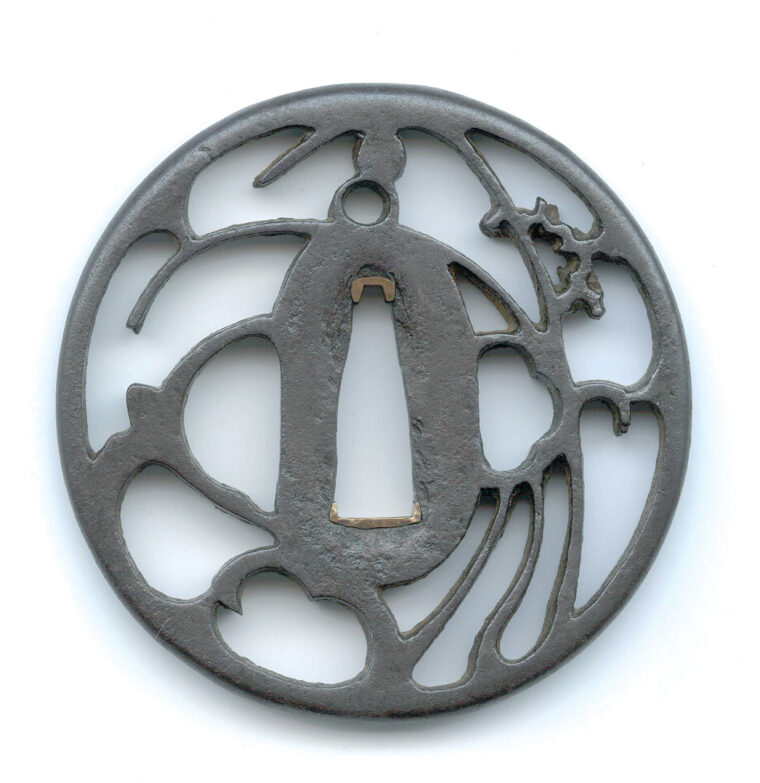
Collectors are more likely to encounter tsuba from the 16th century, which were made for the katana, the traditional Japanese long sword, or for the wakizashi, the short sword. This is also the era when specialist tsuba makers emerged, and many of these iron guards were decorated with openwork designs taken from nature or representing family crests or religious or literary themes. Jim Gilbert says he has seen “guards made of or decorated with colored copper alloys. Tsuba from the 17th century and later show increasingly elaborate decoration with many motifs from Japanese myth and legend.”
After the “Age of Battles” ended in the 17th century, Japan was unified and the shogun ruled from the new capital of Edo (Tokyo) for 250 years of peace. This change in the political spectrum in Japan led to a change in the appearance of not only the samurai warriors but also their weapons. The new swords were changed from a utilitarian style to one more appropriate for appearances before the shogun and the imperial court.
This led to various styles of design during the era, with the Goto family becoming the primary carvers in the service of the shogunal house until the Meiji Restoration of 1868. Throughout their service to the Shogun this school of design was limited to a select set of rules, called iebori, that were passed down from generation to generation. In addition to determining the quality and type of materials that were to be used for the imperial family, the range of subject matter was also limited to dragons, flowers, grasses, scenes from the famous Noh drama, and select human figures.
Dissatisfaction with the limits of the rigidly traditionalist Goto school resulted in many diverse tsuba makers whose styles have also garnered interest from collectors. Among those that have attracted interest today are the Nara and Yokoya Somin schools. During the late Edo and early Meiji periods, the last of the Goto school, Goto Ichijo, began to use iron in the creation of his work, which had been strictly forbidden in the main family. He died in 1876 just as the winds of change began and the wearing of swords was banned nationwide. It would take an entire book to discuss the differences in tsuba as well as the politics involved during the various eras—and actually several books have been written (see sidebar).
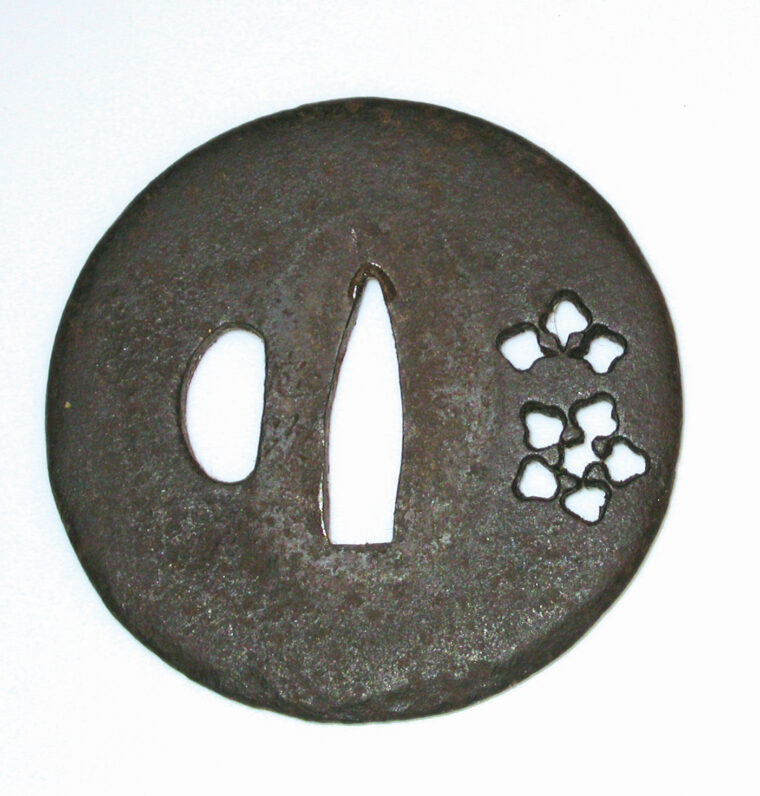
Yet even as Japan transitioned from a closed society to a modern power, tsuba remained part of the culture. There was even a market for commercial tsuba. “We see many examples of these shiiremono [ready-made as opposed to custom order] guards in the United States,” explains Gilbert. “After Japan opened to the West, we see the emergence of guards that were produced strictly for sale to foreigners. Some of these latter examples are very beautifully made, but strictly speaking they are not really tsuba because they were not made for use on a sword.”
Common among tsuba of the various eras are five general shapes. The most common is round, which includes circular variations such as elliptical shapes or the form of the traditional chrysanthemum.
Square tsuba with rounded corners are also relatively common. Variations are octagonal or hexagonal forms. Named for the cross- section of the tree melon, the Mokko style features four lobes, while the Aoi is a unique variation that includes four heart-shaped lobes made to resemble the leaves of the assarum (aoi) plant. Finally, the Shitogi resemble a Shinto temple rice cake; these were used on ceremonially mounted swords. In addition to these five general shapes, there are dozens of unique variations, which is not surprising given that, unlike modern weapons, premodern swords were unique to their owners and specialized craftsmen were responsible for their creation.
The Japanese military swords that were carried in World War II, including the Type 94 pattern sword covered in the February 2002 issue, also utilized a brass hand guard featuring an aoi shape decorated with four raised cherry blossoms. These were almost always mass-produced and most collectors do not consider them true tsuba, though they often appear on Internet auction sites as such.
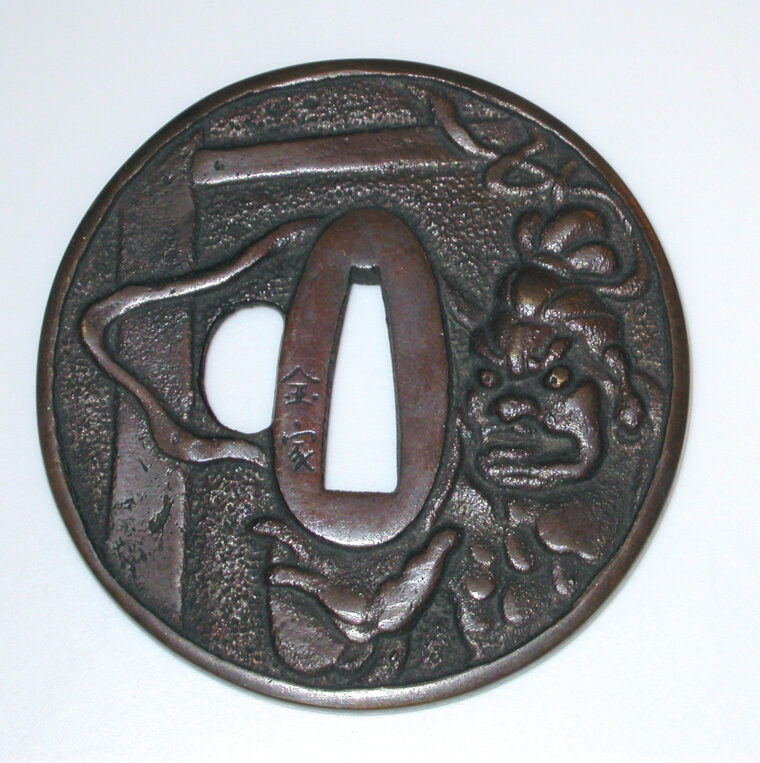
Finding tsuba for sale today is not that difficult. With numerous Internet auction sites such as eBay and specialized online dealers offering items for sale, finding them is not the tricky part. Finding quality originals may be—especially considering that many “fakes” may be hundreds of years old.
“With Japanese swords and fittings, fakes have been around almost as long as the originals,” states Jim Gilbert, who says that lesser makers and even unscrupulous sellers have been signing pieces and using the names of more famous makers for hundreds of years, to the point that fakes with the name of famous makers vastly outnumber the surviving genuine article. But, sadly, not all the fakes are from the past. “In addition to these historical forgeries, the collector has to look out for modern copies, some of which can be difficult for the beginner to detect.”
It is probably easier to copy a true master’s signature than it is to duplicate the quality of his work. After the 16th century it was common for items such as sword blades to be “signed” by their creators. This often causes some confusion for Western collectors because these signatures can be mistaken for “Japanese writing.” But the fact remains that the writing is most often the signature of the creator and thus is used to identify the creator (at least of an original piece). More importantly, these signatures can help a potential buyer determine if a tsuba is a period copy or an original.
Some of the copies have begun to attract attention as collectibles, too, but they are certainly not worth the price of an original. “There are many copied tsuba from the Edo period,” explains Kazushige Tsuruta of Aoi-Art, a Tokyo dealer specializing in Japanese swords for more than 20 years. He says that since more than a hundred years have passed they have become genuine antiques, yet the collector should only purchase or sell these as period copies. Moreover, he adds, “if the tsuba has a false signature, collectors shouldn’t purchase it.”
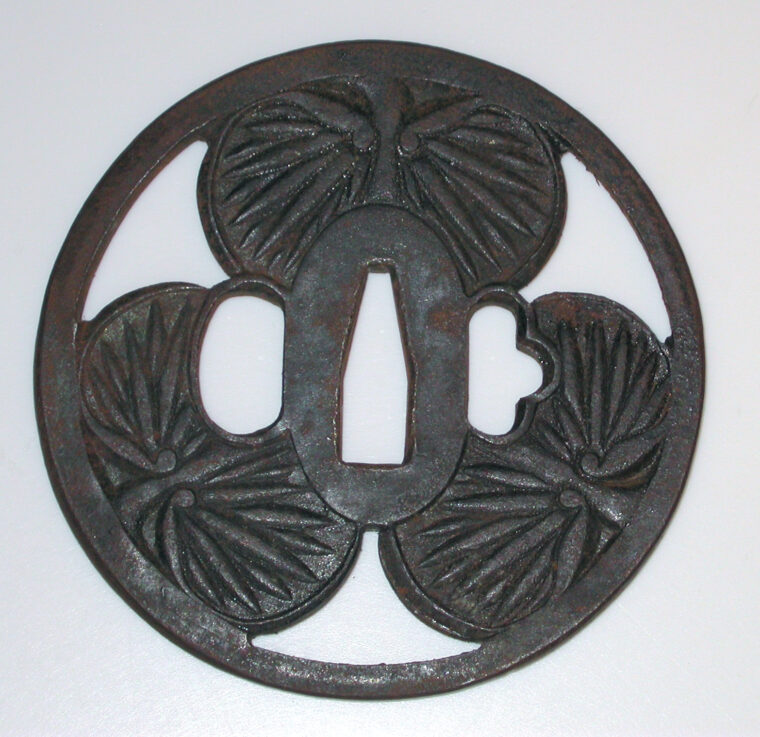
Even if an item has the proper workmanship, it is advisable to compare known valid examples with the piece in question. Experts like Gilbert suggest that both of these evaluations—examining the quality and the signature—require a great deal of familiarity with good pieces. “As you can guess, tsuba can be ordinary, extraordinary, fine, or fake,” states Jean Schaefer, principal with her husband Clifford of Flying Cranes Antiques, an international resource of Asian collectibles that has been based in New York for the past 18 years. “In order to identify the work of masters, a good deal of effort and pleasure goes into the learning process.”
This is especially important today, particularly with items readily available on auction sites that may be nothing more than cast copies—but could still be more than a hundred years old. Cast items will often reveal subtle flaws and poor details or even irregularities that wouldn’t have been accepted by a true master craftsman. However, many castings may have been made as paperweights or souvenirs and thus are not exactly copies. Because they were never intended to be used on a sword, they are not exactly sword fittings or tsuba either. But they do occasionally get passed off as the genuine article, so potential buyers should be on guard.
More worrisome is that numerous reproductions or fakes are still being made today, in some cases to the point that they are practically mass-produced. Says Jim Gilbert, “These will usually look too crisp and new for what they’re supposed to be.” The quality and materials may even give away the fact that it is a modern replica of a supposed period piece. “The best defense against these is to carefully study many genuine examples so that even minor deviations will stand out as ‘not right.’ Obviously this is a problem for the beginner who has years of study ahead of him.”
Because most tsuba are made of metal—often iron but also any number of other materials—they are highly susceptible to the ravages of time. But if they’ve managed to survive two hundred or more years already, chances are they’ll be fine with a minimal amount of cleaning. Care should be taken to preserve the details when any cleaning is undertaken. With samurai sword blades, the general rule of thumb is not to remove any of the reddish rust that is on the handle. In the case of tsuba, it is best to remove any excessive amounts of rust because rust can, and most likely will, spread in humid environments. Again, it would take an entire article to cover the restoration of these collectibles, so it is best to consult an expert on how to proceed. But do beware of chemical cleaners and never use anything abrasive.
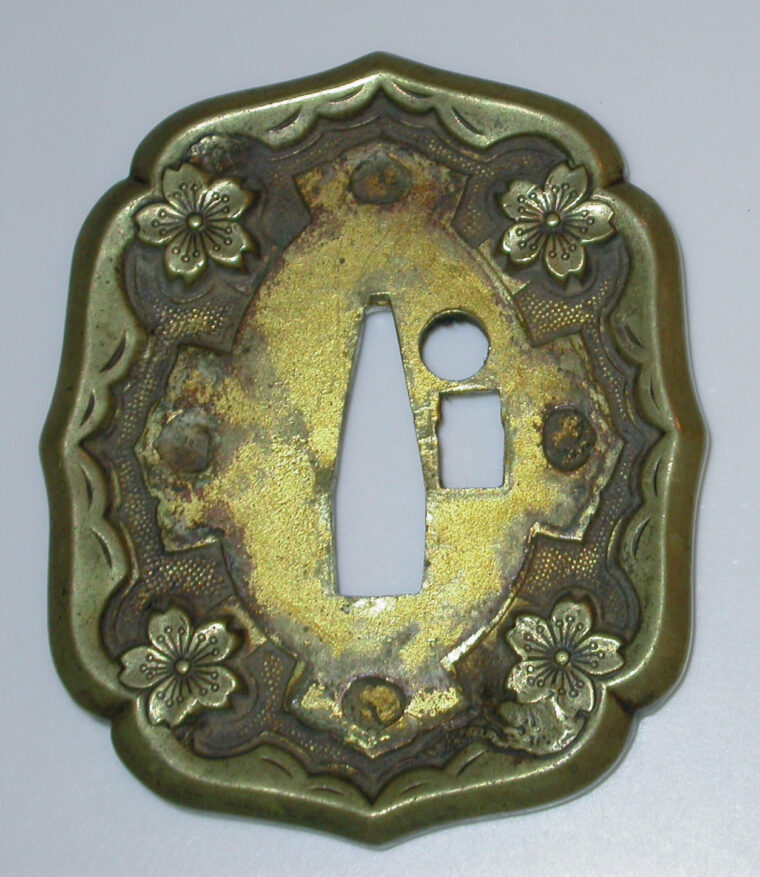
Display is up to individual taste, but it is probably not wise to store tsuba directly on a shelf without some sort of protection. Limit the amount of touching because fingerprints tend to be a good starting point for further rust. One nice option for storage and display is a tsuba box, which is often made out of kiri wood—a lumber native to Japan that looks and feels like balsa but is much harder. The wood is supposed to close up as the humidity rises, thus protecting the tsuba inside. Even if it doesn’t, these boxes do make attractive and appropriate storage containers. Additionally, they are usually silk-lined and divided to keep tsuba from banging into each other. As with other “copies” on the market, there are American-made fakes that are not made of kiri wood and that feature inferior construction; collectors need to be aware of these as well.
When it comes to the buying and selling of tsuba (and even kiri boxes), it is also best to heed the advice of Richard Stein’s Japanese Sword Index Web site. Novice buyers should be careful on Internet auction sites; even experts would have difficulty evaluating an item’s potential value from a photograph, and sellers may provide faulty information—knowingly or not. If you are looking to sell an item or at least to have it appraised, beware of dishonest advisers who will try to convince you that your item isn’t worth much—and then offer to take it off your hands.
If you are looking to buy tsuba, you should work with reputable dealers and try to get first-person advice from a knowledgeable collector. One fairly new collector even offered this advice: Look in catalogs and on Internet sites that sell reproductions so that you can train yourself to spot modern items offered as antiquities. Of course, having an evaluation period for any military collectible bought mail order or via the Internet is an absolute given. If the dealer doesn’t offer at least a three-day appraisal it is best to walk away.
Research and knowledge are especially important, and a collector should be well armed with good information. Concludes Flying Cranes’ Jean Schaefer, “A good library and trips to museums featuring arms and armor add to the joy and feelings of security.”
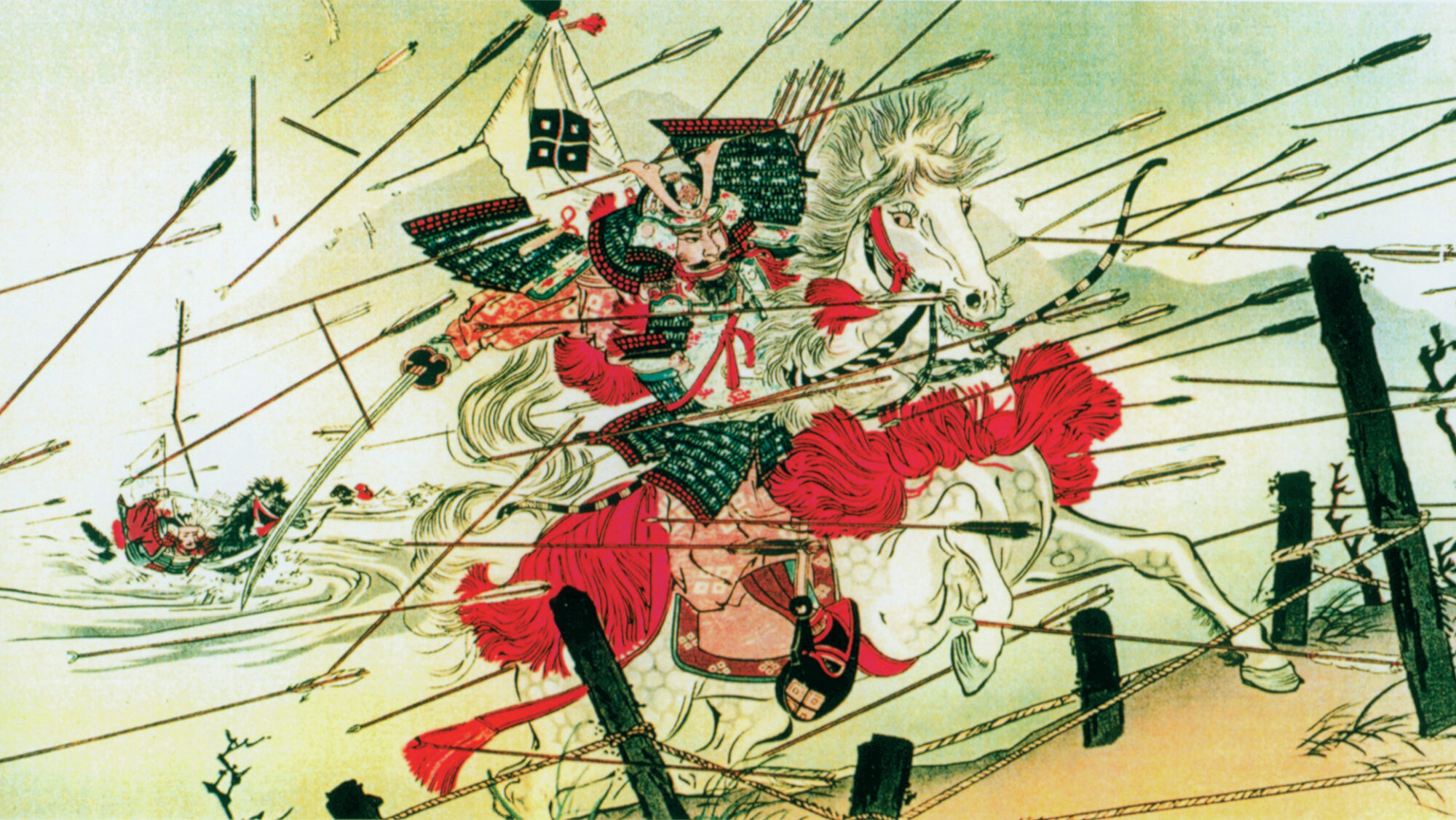


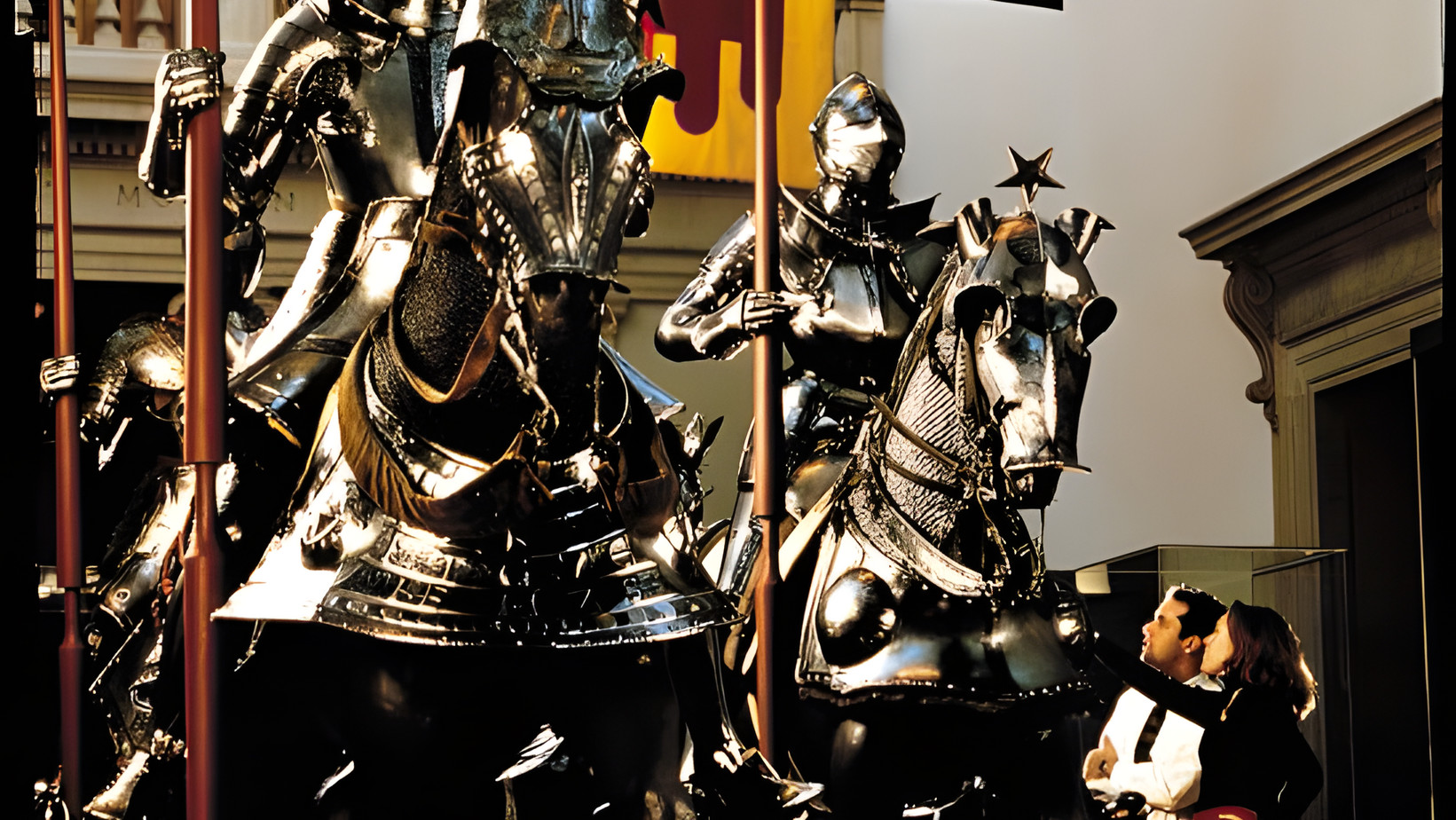

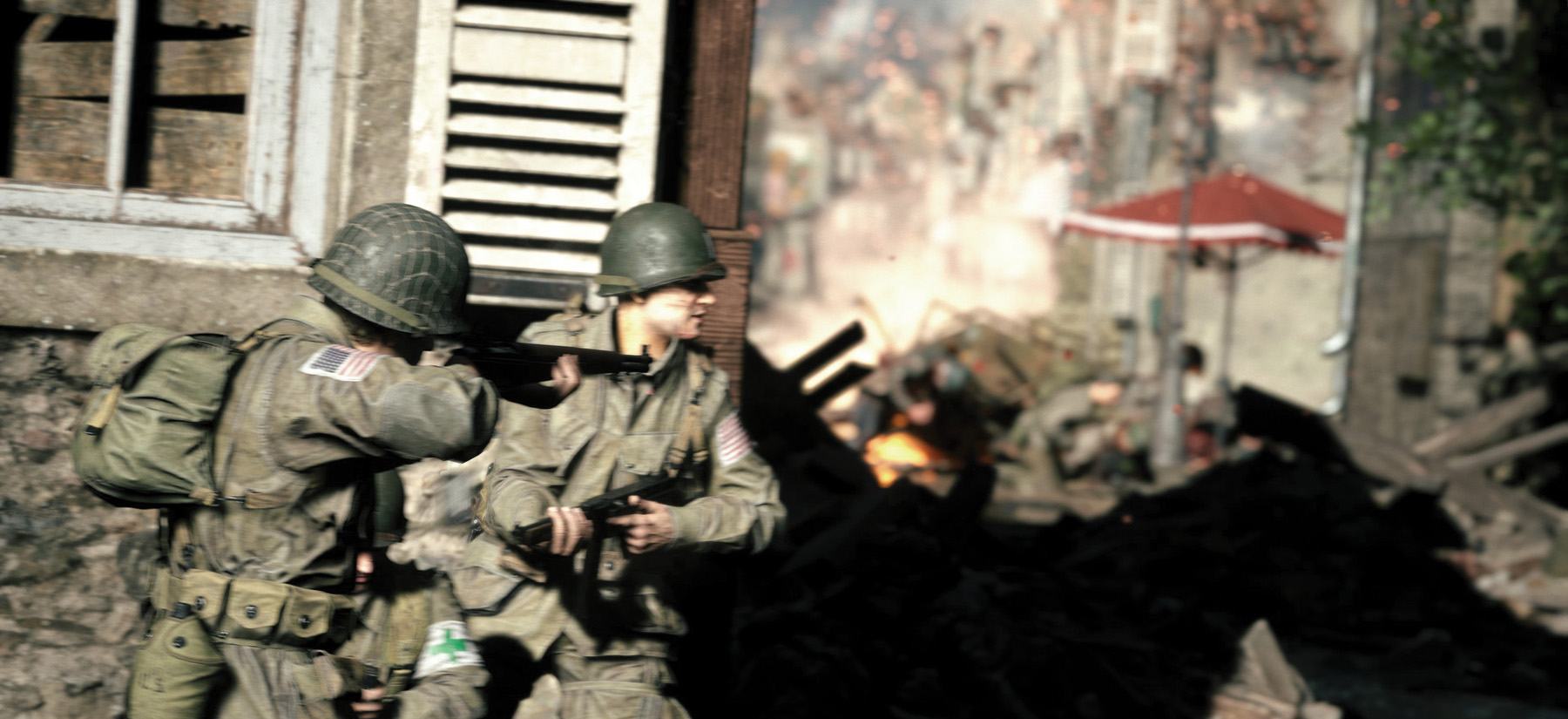
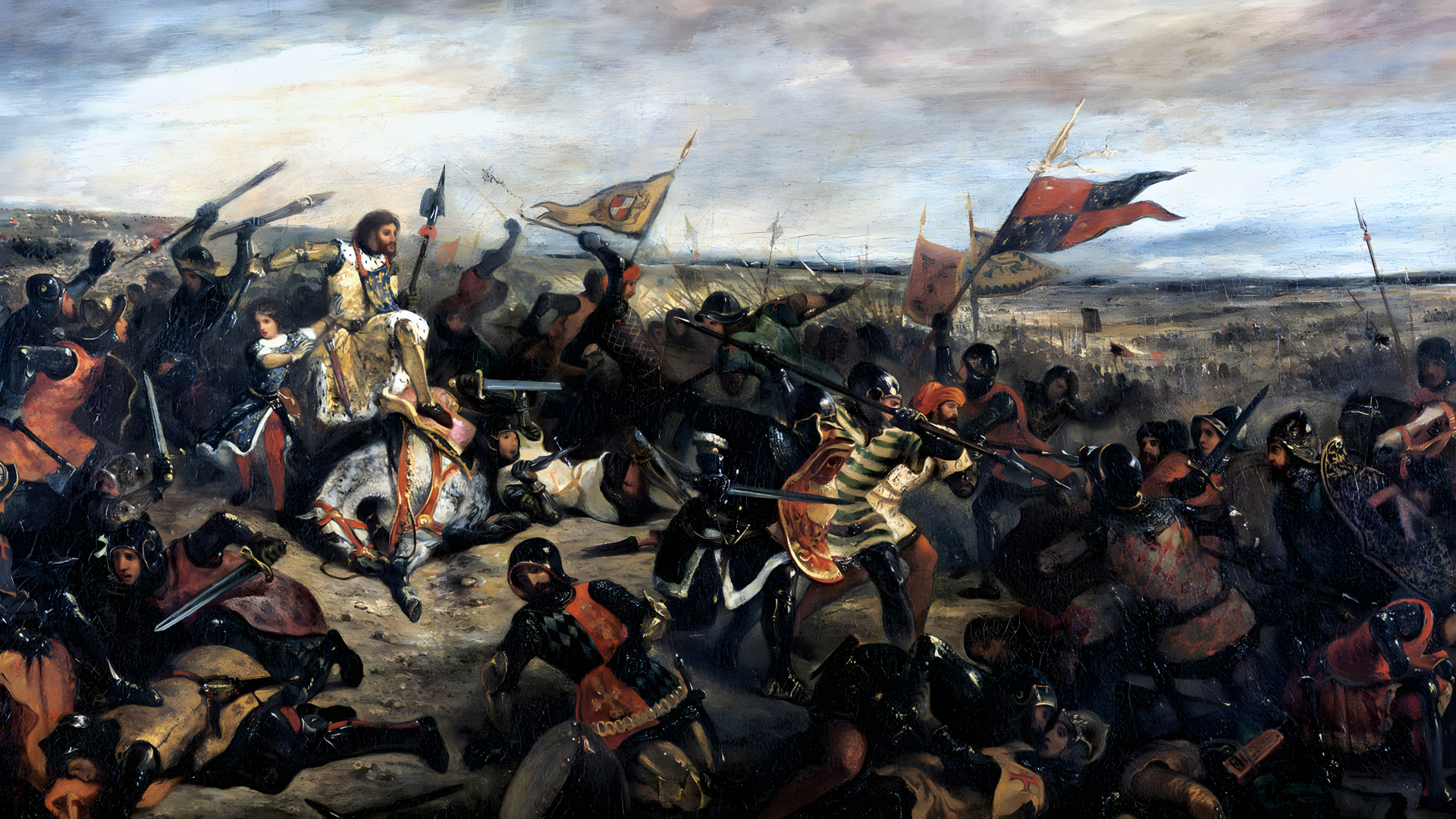
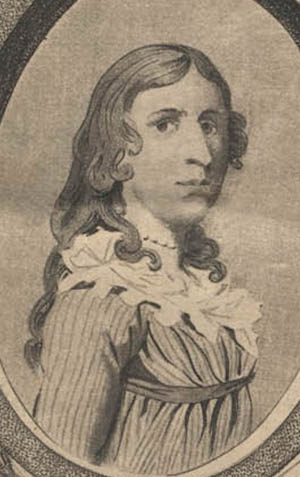
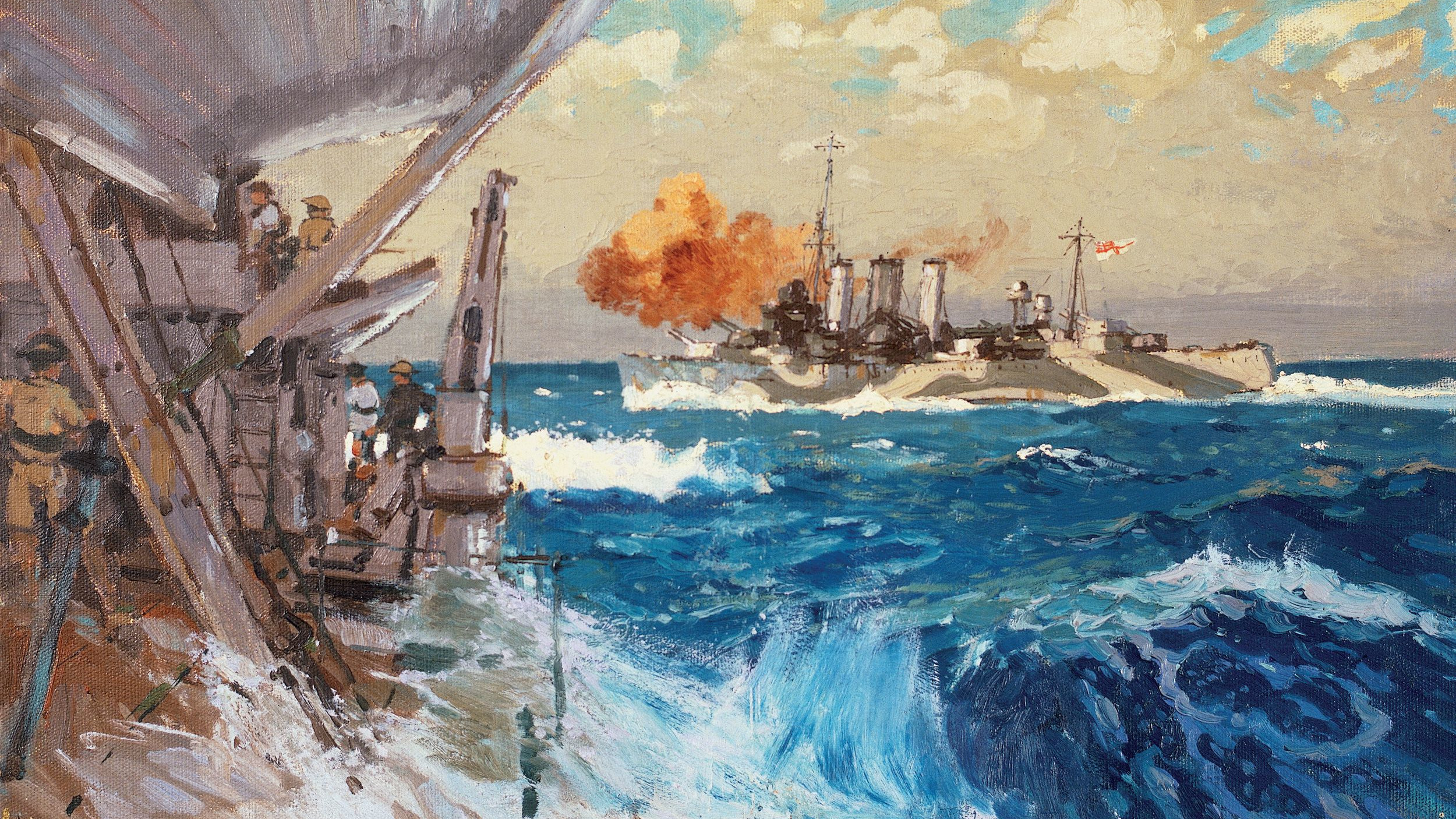
Join The Conversation
Comments
View All Comments